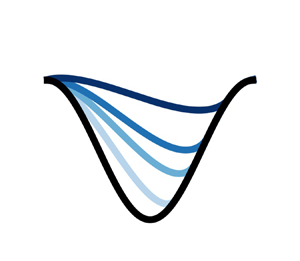Article contents
Numerical approximation of viscous contact problems applied to glacial sliding
Published online by Cambridge University Press: 15 March 2022
Abstract

Viscous contact problems describe the time evolution of fluid flows in contact with a surface from which they can detach and reattach. These problems are of particular importance in glaciology, where they arise in the study of grounding lines and subglacial cavities. In this work, we propose a novel numerical method for solving viscous contact problems based on a mixed formulation with Lagrange multipliers of a variational inequality involving the Stokes equations. The advection equation for evolving the geometry of the domain occupied by the fluid is then solved via a specially-built upwinding scheme, leading to a robust and accurate algorithm for viscous contact problems. We first verify the method by comparing the numerical results to analytical results obtained by a linearised method. Then we use this numerical scheme to reconstruct friction laws for glacial sliding with cavitation. Finally, we compute the evolution of cavities from a steady state under oscillating water pressures. The results depend strongly on the location of the initial steady state along the friction law. In particular, we find that if the steady state is located on the downsloping or rate-weakening part of the friction law, then the cavity evolves towards the upsloping section, indicating that the downsloping part is unstable.
Information
- Type
- JFM Papers
- Information
- Copyright
- © The Author(s), 2022. Published by Cambridge University Press
References
REFERENCES
- 9
- Cited by


